Photography during the victorian time would be the thing to get youre goods to a wider audience , so somewhere I expect the maker to have had some sort of photographic record of this table done , in the form of an advertisement in a newspaper just like top quality goods are advertised in country life Magazine today , it may be a one off , it may be a design that had various leg designs made or adapted for it , I think it is over built for a Bagatelle table , most mid victorian tables had rather slim legs turned from 5 to 6inch blocks , unlike your table which has full sized turned legs made from a 10 inch block looking at the upper carved ball area of the leg , also the use of 6 legs in place of the standard 4 legs and the 6 pockets are to me a special order .
I would date the table from 1890 to 1910 , even though it has top plates as the (called pocket irons in the USA ) form of brass pocket plate and these where old fashioned come the early 1900s , I think in bagatelle tables the older type top plate would have been the preffered choice for a pocket .
the more I look at it the more I think of George wright build quality with those wide cross members in the inner frame work although those legs look a bit Thurston to me ,
I notice from the photo there is a name plate or a plate missing on the end curved cushion ? have you the exact size of the plate rebate hole, I may be able to measure a few plates includeing a Geroge Wright to see if it is close , as makers made their own plates the same size but different firms would use differant sizes and depth.
Have alook at this Geroge Wright table with similar legs apart from the top ball of the leg I think the shape is the same , just add a bit more detail in the top ball on your bagatelle table
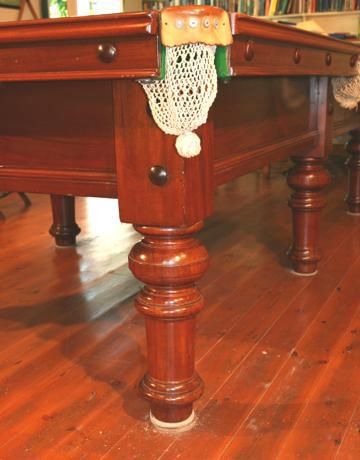
also look at this George wright leg design ,very similar in shape don't you agree?
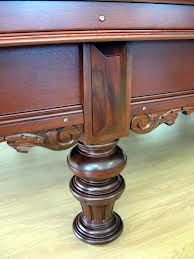
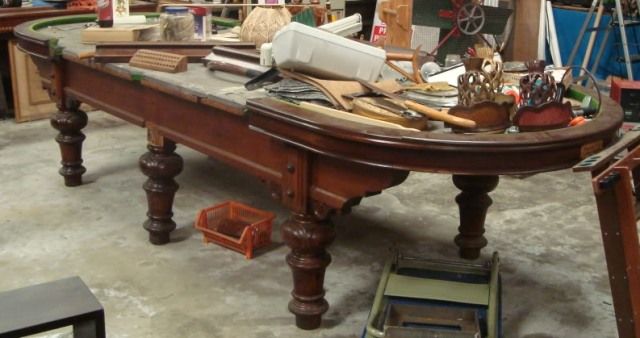
also an advertisement for George wright
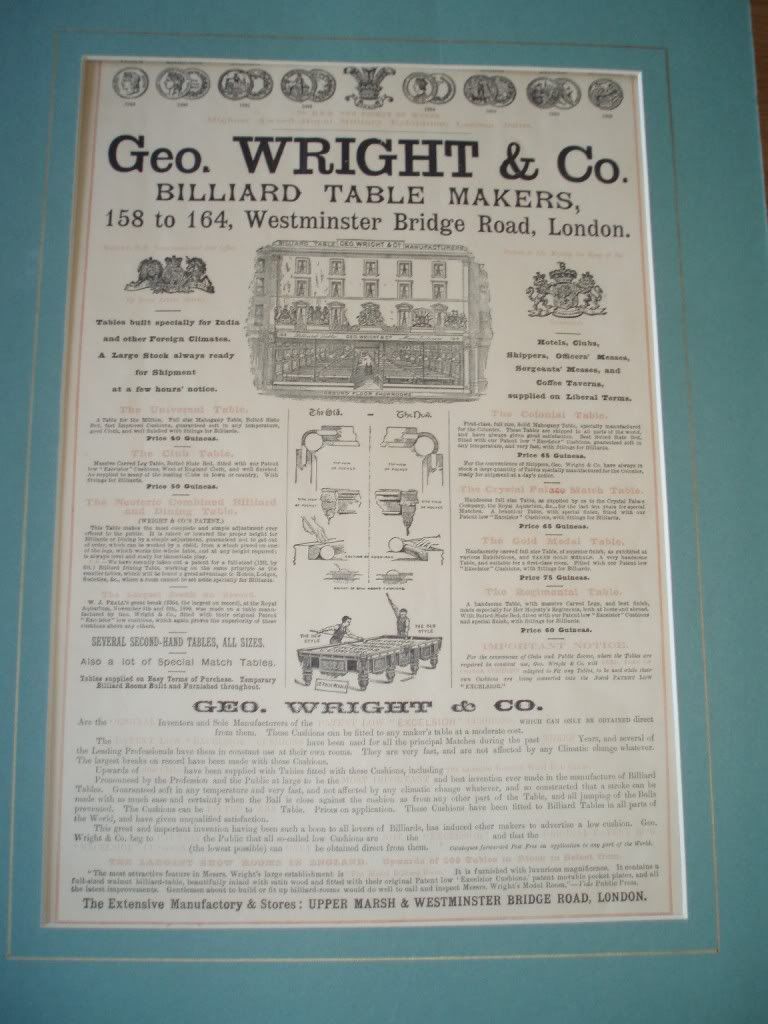
if youre missing name plate is 4.1/2 inch by 2.1/16th inch then it is a George wright , four screw holes at each corner 1/8th thick rebate hole.
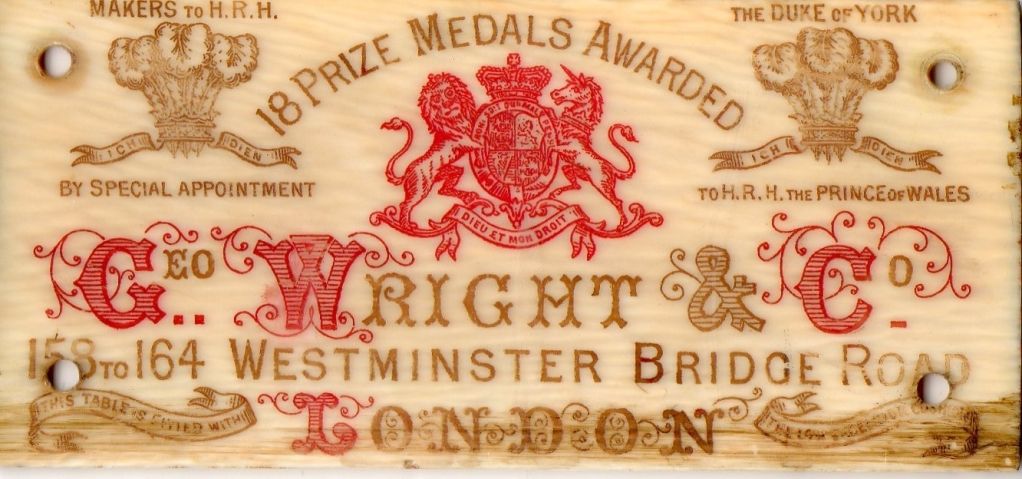
Note that the fixing holes are not all in alignment , they where not too accurate when drilling the holes , they kept the hole away from the edge of the Ivory plate to avoid breaking the ivory when screwing up , and often drilled through the letters . so each table would have had random hole measurements to each other , George Wright never jigged them up to be all the same . which often puzzled me as other firms did .
I may be able to get you an IVORY original plate if you are missing it . and you find it is a George wright sized square hole for the above plate . it certainly looks like it from the photo. measurement will vary slightly so if it is a shade larger or smaller it prob still is a George wright.
I would date the table from 1890 to 1910 , even though it has top plates as the (called pocket irons in the USA ) form of brass pocket plate and these where old fashioned come the early 1900s , I think in bagatelle tables the older type top plate would have been the preffered choice for a pocket .
the more I look at it the more I think of George wright build quality with those wide cross members in the inner frame work although those legs look a bit Thurston to me ,
I notice from the photo there is a name plate or a plate missing on the end curved cushion ? have you the exact size of the plate rebate hole, I may be able to measure a few plates includeing a Geroge Wright to see if it is close , as makers made their own plates the same size but different firms would use differant sizes and depth.
Have alook at this Geroge Wright table with similar legs apart from the top ball of the leg I think the shape is the same , just add a bit more detail in the top ball on your bagatelle table

also look at this George wright leg design ,very similar in shape don't you agree?


also an advertisement for George wright

if youre missing name plate is 4.1/2 inch by 2.1/16th inch then it is a George wright , four screw holes at each corner 1/8th thick rebate hole.

Note that the fixing holes are not all in alignment , they where not too accurate when drilling the holes , they kept the hole away from the edge of the Ivory plate to avoid breaking the ivory when screwing up , and often drilled through the letters . so each table would have had random hole measurements to each other , George Wright never jigged them up to be all the same . which often puzzled me as other firms did .
I may be able to get you an IVORY original plate if you are missing it . and you find it is a George wright sized square hole for the above plate . it certainly looks like it from the photo. measurement will vary slightly so if it is a shade larger or smaller it prob still is a George wright.



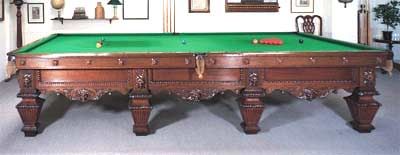
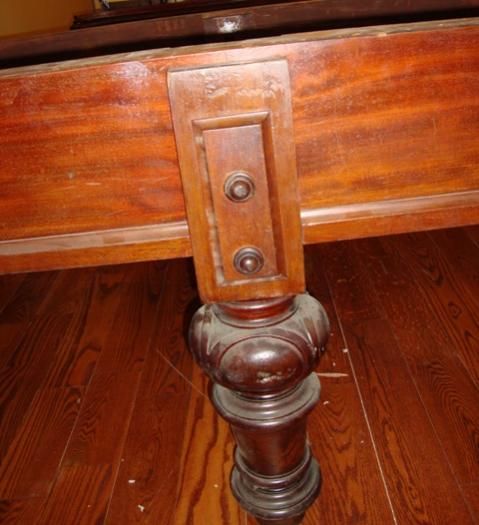
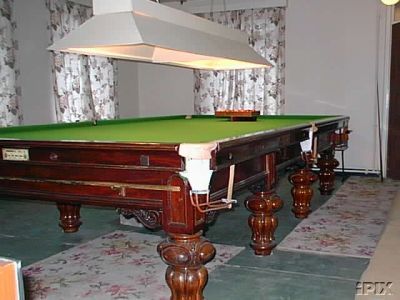
Comment